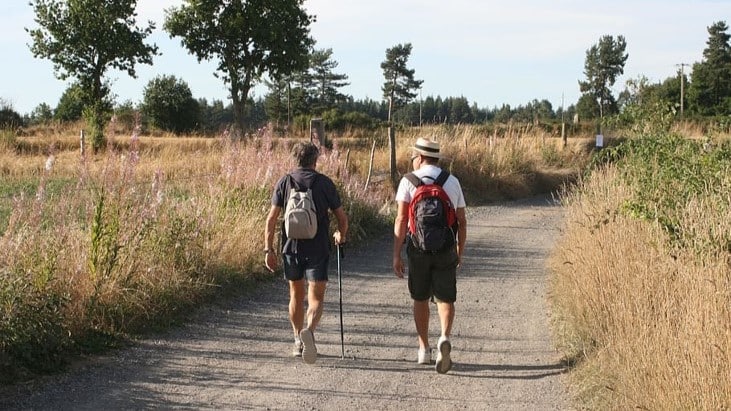Author
Kathy Costello , Nurse Practitioner
Close
Sponsored by Sanofi

20 Nov 2024 | ~4:45 Engagement Time
The multiple sclerosis disease courses include relapsing MS and progressive forms of MS. Progression that follows early relapses is termed secondary-progressive MS, and progression that occurs from disease onset is called primary progressive MS. It is important to know that more recent research indicates that a slower, smoldering MS process of chronic inflammation is occurring within the central nervous system from disease onset and is believed to be a large driver of progression.
How disease progression is experienced will vary significantly among individuals. However, many people notice that their mobility changes over time, with difficulty walking being among the most challenging limitations of multiple sclerosis.
Difficulty walking can be challenged by reduced endurance, increased stiffness or spasticity, weakness and balance problems. The good news is that there are strategies that you can use to help combat mobility challenges related to MS progression.
Muscle weakness is common in multiple sclerosis and often is due to damage to the central nervous system. Often, MS causes weakness in muscles that help lift your foot or raise your hip. This might lead to tripping while walking or other gait challenges
In addition to weakness, other challenges in mobility may cause a reduction in your overall activity, which can lead to another type of weakness, disuse weakness. Muscles that are getting the right messages but are not used enough become weak and less able to help you move.
In multiple sclerosis, you may start out walking just fine, but with persistent effort, muscles get exhausted, and the risk for trips and falls increases. Exercises targeting the hip and leg muscles that help raise your leg can improve strength. In addition, strengthening your core and hip muscles will help with support and stability. For example, getting up from a chair or a sofa not only requires strength in your legs but also strong core muscles.
So, how do you increase your strength? Try functional exercises like those in our MS Moves exercise video library. Here are some to check out:
Walking Challenge Exercise Series
Building Your Balance Exercise Series
Regular exercises targeted at function can help you move with more strength and endurance. This does not mean exercise to exhaustion. Start with 5-10 minutes 1-2 times daily and increase as your function improves.
Balance, or our ability to remain stable whether seated, standing, or moving, requires a lot of complex activities. It involves your vision, inner ear function, and sensation – as well as the ability of the brain to process information and send the correct messages to the rest of the body to let you know where you are in space. It can also be affected by weakness, spasticity, fatigue, or overheating.
Due to the complexity of balance, if you feel unsteady or imbalanced or like the room is moving around you, it is time to discuss the symptoms with your MS provider. A thorough evaluation can determine what is causing the balance problem, and a treatment plan can be developed. For example, a referral to a rehabilitation professional can help with many aspects of balance. Even problems with your inner ear function can be managed through vestibular rehabilitation. The key is letting your MS care provider know what you are experiencing.
Many people with multiple sclerosis develop stiffness, spasticity, cramps or spasms in their muscles. Most frequently, this is in the lower extremities and can make walking and moving challenging – and sometimes painful!
Spasms can occur at any time and are often worse at night. Stiffness in other parts of the body can also occur – in the hands, arms, neck and back, to name a few places. Regular stretching can help reduce spasticity. Moving the muscles and joints in your extremities through their range of motion twice each day can help reduce stiffness. A physical therapist can help you learn how to stretch most effectively. If regular stretching is not enough, your MS care provider may prescribe medication that can also help reduce spasticity.
Exercise in a non-heated pool can be one of the most effective activities for someone with MS. Heat is often the enemy of function for people with MS – kind of like kryptonite to Superman. So, a non-heated pool helps avoid overheating. Also, the water can provide resistance that can help with strengthening. The buoyancy of the water can help to limit fatigue. Movement is often easier when in the water, so stretching can be more effective.
While it’s understandable to shy away from mobility devices, reframing the use of them might help. Think of the many tools you use throughout the day – because they make your job easier, quicker, and better. Scissors to cut paper, a hammer to drive a nail, a mixer to make cake batter – each of these makes the job and the outcomes better. Consider an assistive device to be the correct “tool” for better mobility.
Depending on your specific mobility challenge, a rehabilitation professional can help identify the best tool to help your mobility. For example, if weakness in your lower leg causes tripping over your toe, a small brace called an ankle-foot orthotic, or AFO may be the answer. With other walking challenges, a straight cane or a forearm crutch may be the best tool. The best tool is the one that improves your mobility – so you can do the things that you want to do. Working with a rehabilitation professional is the key to identifying the “tool” that benefits you most.